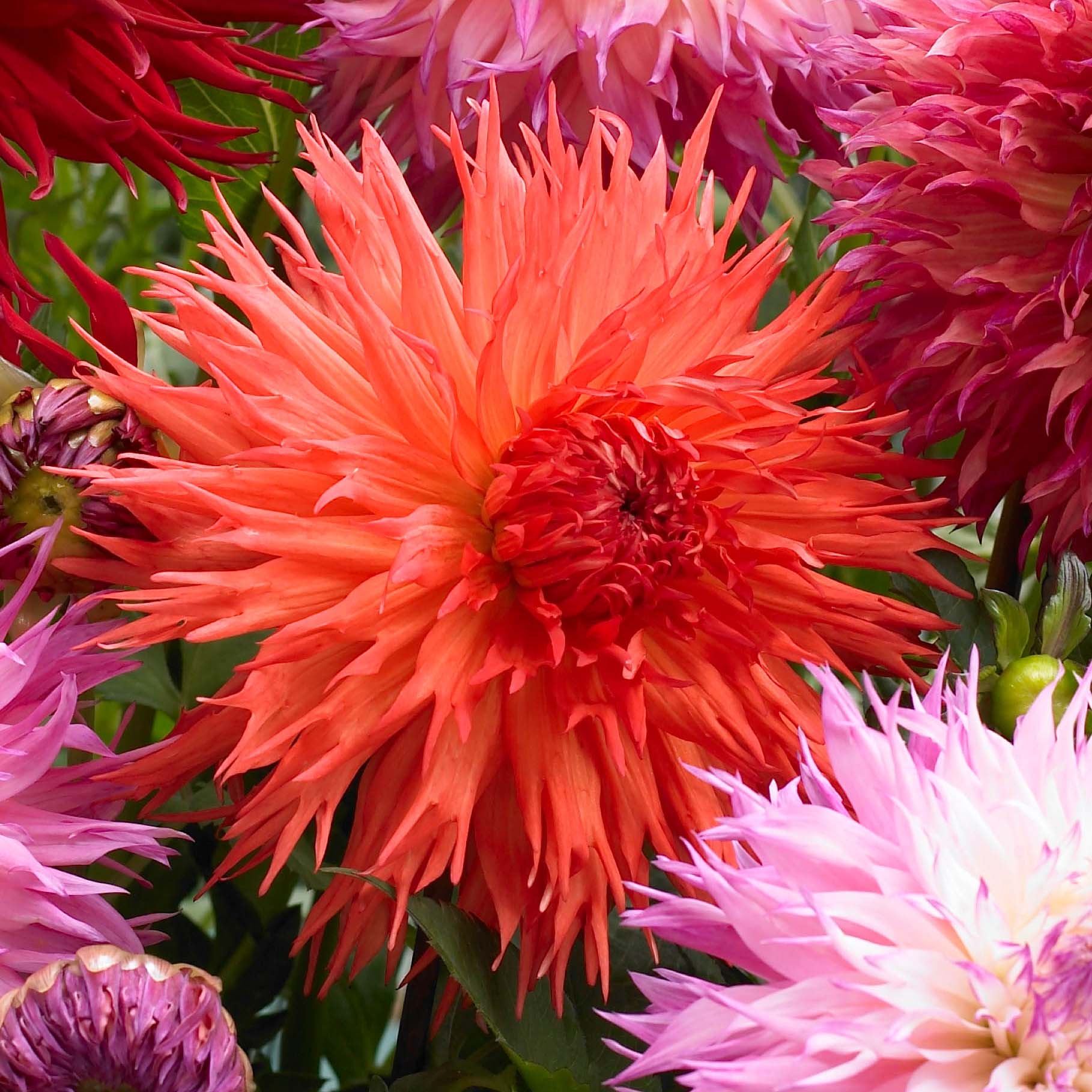
Dahlias: how to combine them in the garden?
8 association ideas, classic or original
Contents
With its beautiful old-fashioned or more graphic appearance, the shape and infinitely variable colours of its flowers, the dahlia is a must-have in cottage gardens, flowering vegetable patches, mixed borders, and vibrant naturalistic scenes. Its strong presence adds substance to a flowerbed, either by providing contrast or enhancing brightness. Whether it is a Pom-Pom dahlia, giant, or dwarf, border, ornamental, collarette, cactus, or landscape, it adapts to all romantic, whimsical, or exotic desires.
The dahlia is an easy-to-pair floriferous bulb; let yourself be inspired by our 8 beautiful garden pairing ideas!
To add depth and character to a mixed border
Dahlias are a boon for gardeners eager to bloom a sunny spot all summer long with minimal effort. With their strong presence, a few Dahlia plants are enough to add depth and character to a flowerbed and create scenes that appear wild and vibrant.
Dwarf varieties, which can be propagated by Happy Single, Dwarf Cactus Dahlia, or Landscape Dahlia, will be very suitable for the front row of naturalistic borders alongside mini gladioli or small lilies.
Mini-balls or Honkas with pointed petals will add a certain lightness.
The taller specimens, such as Cactus or Decorative Dahlias, are reserved for the second or third rows of borders where they will be surrounded by a clever mix of tall grasses (Molinies, Miscanthus) and robust, very hardy perennials that grow on their own, requiring no special care, becoming more opulent and floriferous each year: Heleniums, Daylilies, Echinacea purpurea, Crocosmias, Sage, Garden Poppies, Sanguisorbas, Oriental Poppies, Lupins, or Daisies.

Sage ‘Icing Sugar’ – Dahlia Honka ‘Pink’ – Papaver orientale ‘Clochard’ – Echinacea purpurea ‘Razzmatazz’ – Lupin ‘My Castle’

Dahlia ‘Jescot Julie’ – D. ‘Karma Choc’ – D. ‘Corbel Brons’ – Echinaceas
Read also
The best Dahlias for bouquetsSpicy pairings and exotic touches
This bed of warm and bright hues is best reserved for the sunniest corners of the garden. It truly reveals its splendour in the middle of summer, but it ignites the garden until the beginning of autumn. Dahlias in spicy colours, Pom-Pom Dahlia or Dahlia ‘Mel’s Orange Marmalade’ will compete with the most vibrant tones surrounded by orange Echinaceas that bloom at the same time, red shrub salvias, Oriental Poppies, Crocosmias, Heleniums, Phlox paniculata, Rudbeckias, Zinnias, Daylilies, Sunflowers, and Gaillardes. These dahlias with fiery colours will be perfect in the foreground of Foxtail Amaranths or a Castor Bean. A contemporary association with Kniphofias, standing tall and very stylish, along with the linear leaves of a New Zealand Flax will enhance this exotic-themed tableau. We can rely on the quivering panicles of Miscanthus or the silvery foliage of wormwoods (Wormwood ‘Powis Castle’, Artemisia arborescens ‘Little Mice’) to temper the fire.

Crocosmia- Heleniums ‘Short Sassy’- Cactus Dahlia lace – Daylily ‘Ruby Spider’- Kniphofia ‘Minister Verschuur’
Discover other Dahlias
View all →Available in 1 sizes
Available in 1 sizes
Available in 0 sizes
Available in 1 sizes
Available in 1 sizes
Available in 1 sizes
Available in 0 sizes
Available in 0 sizes
Available in 1 sizes
Available in 1 sizes
Contrasting effect with grasses
What a lovely idea to use these tall wild herbs to highlight the strong character of the dahlia flower! In a border, grasses are both very structuring and wild. The sharply defined shape of the flowers and the sometimes coarse foliage of dahlias introduce powerful accents in a border that the airy grasses counterbalance by adding texture, movement, and an infinite lightness. All dahlias integrate within a profusion of grasses in straw tones, enhancing the graphic and airy aspect of a Pennisetum or foxtail grass with large silky spikes, a Miscanthus sinensis ‘Malepartus’ with pink spikes, a Stipa pennata, a Molinia arundinacea ‘Windsaule’ with silver spikelets, or a Hordeum jubatum or foxtail barley, with silky inflorescences. A blend with subtle charm from the beginning to the end of summer.

Dahlia ‘Ridel’ and Hordeum jubatum or foxtail barley – Pennisetum
Vegetable harmony
If dahlias are the stars of borders and cottage gardens, their colourful and opulent flowers are also must-haves alongside vegetable plants. Dahlias make stunning bouquets: rows of these cut flowers in a corner of the vegetable garden will be enough to break the monotony of those alignments of vegetables! The large dahlias (Giant Dahlia ‘Barbarossa’, ‘Bristol Stripe’) will pair well with low plants, such as courgettes: a harmonious cohabitation that will help maintain freshness at the base of the dahlia during summer. Consider placing a Lace Dahlia ‘Encore’ with its large, fluffy, bright yellow heads next to an Artichoke with its gigantic metallic blue leaves. Complementary, they will enhance each other and the effect will be truly spectacular as September approaches.

Fennel – Dahlia ‘Barbarossa’ – Artichoke ‘Vert de Laon’ – Dwarf Nasturtium – Gladiolus ‘Handel’
In the vegetable garden, dahlias can be perfectly mixed with Rudbeckias, gladioli or Zinnias, rising up in the heart of summer amidst the bronze or green foliage of Bronze Fennel or forming a magnificent backdrop for a border of Indian pinks, Red oraches, and dwarf nasturtiums.
Requiem in shades of pink!
Embrace monochromy by mixing roses: soft pink or magenta pink. They will harmonise perfectly, creating a decor imbued with poetry or voluptuousness. The infinite colour palette of dahlias allows for all variations. Romantic version featuring a Waterlily Dahlia ‘Gerrie Hoek’ with very soft silver-pink flowers, an Anemone Dahlia ‘Take Off’, or the Pom-Pom Dahlia ‘Wizard Of Oz’ in rose-mauve. Well-suited for a central position or the third rank in a flowerbed or border, they pair nicely with cool-coloured cosmos, old roses, Phlox paniculata ‘Violet Flame’, the light heads of large Verbena from Buenos Aires, or tall Lavateres. Let the pinks rise! This festival of saturated colours is perfect for late-season: dare to combine strong tones by bringing together fuchsia pink balls from the Pom-Pom Dahlia ‘Purple Fox’, the deep raspberry pink of the Cactus Dahlia ‘Urchin’, the purplish pink of the Pom-Pom Dahlia ‘Rocco’, Amaranths, Cleomes, Asters, Cosmos, and Purple Coneflower ‘Vintage Wine’. The beauty and richness of these magenta shades will be enhanced by plants with purple or dark foliage, such as a Purple Smoke Tree. So many pinks would be overwhelming without the counterpoint of silver artemisias, young eucalyptus, and glaucous grasses (Panicum virgatum ‘Dallas Blues’) or chalky white spikelets (Pennisetum villosum).

Dahlia ‘Senior’s dream’ – Artemisia ‘Powis Castle’ – Aster ‘Dumosus Jenny’ – ‘Phlox ‘Early Red’- Panicum ‘Dallas Blues
For a hot/cold romance

Cactus Dahlia ‘Friquolet’ – Aconitum ‘carmichaelii Arendsii’ – Ornamental Tobacco ‘Cuba Red Bright’ – Phlox ‘Blue Paradise’
The incandescent balls of Dahlia pom-pom ‘Red Fox’ or the fiery, tousled inflorescences of Cactus Dahlia ‘Friquolet’ or Fimbriata Dahlia ‘Red Fubuki’ will grace vibrant blue lupins, azure Phlox paniculata (‘Blue Paradise’, ‘Chattahoochee’), intense violet aconites, or a Gentian Sage for a sumptuous, contrasting bicolour marriage. The red gains in opulence, enhanced by the presence of an Ornamental Tobacco ‘Cuba Red Bright’ or by the dark, purplish foliage of a purple smoke tree.
To flower a terrace or a balcony
Some fairly compact varieties, small in size (40-60 cm) such as the Dwarf Cactus Dahlias ‘Red Pygmy’ or ‘Park Record’ are very suitable for summer pots. The Gallery Art Deco Dahlias, which are very colourful, as well as the Happy Single ‘Juliet’ and ‘Princess’ with their single, brightly coloured flowers, will provide continuous flowering until the frosts. These miniature dahlias will be wonderful mixed with the spikelets of small feathery grasses (Pennisetum villosum, Hordeum jubatum, Stipa pennata) and the starry blooms of Asters, Dianthus, moss Phlox or Echinaceas.

Dahlia – Hydrangea Limelight – Carex – Geranium – Cosmos (© Biosphoto, Friedrich Strauss)
For XXL bouquets
A must-have for summer or late-season bouquets, XXL flower heads or mini pom-poms, dahlia flowers are so generous, making excellent cut flowers. Whether it’s a very opulent round bouquet, a soft composition, or a rustic arrangement, dahlia flowers are less suited for structured bouquets. Dahlias mix beautifully with each other but also with all sorts of flowers and even, why not, with mini vegetables like decorative cabbages, for monochrome or polychrome creations. Very soft pink dahlias (‘Nenekasi’, Camellia dahlia ‘Offshore Dream’) will be perfect for romantic pastel compositions paired with lilies or rose buds, while pom-pom dahlias (‘Fatima’) fit into more contemporary mixes, and Honka dahlias will add a touch of originality to bouquets. Mixing with foliage (eucalyptus, wormwood, ferns, fennel, sedum) will provide a lovely contrast of shape and hue, but it is not obligatory: the dahlia flower often stands well on its own. In a vase, it lasts about a week.
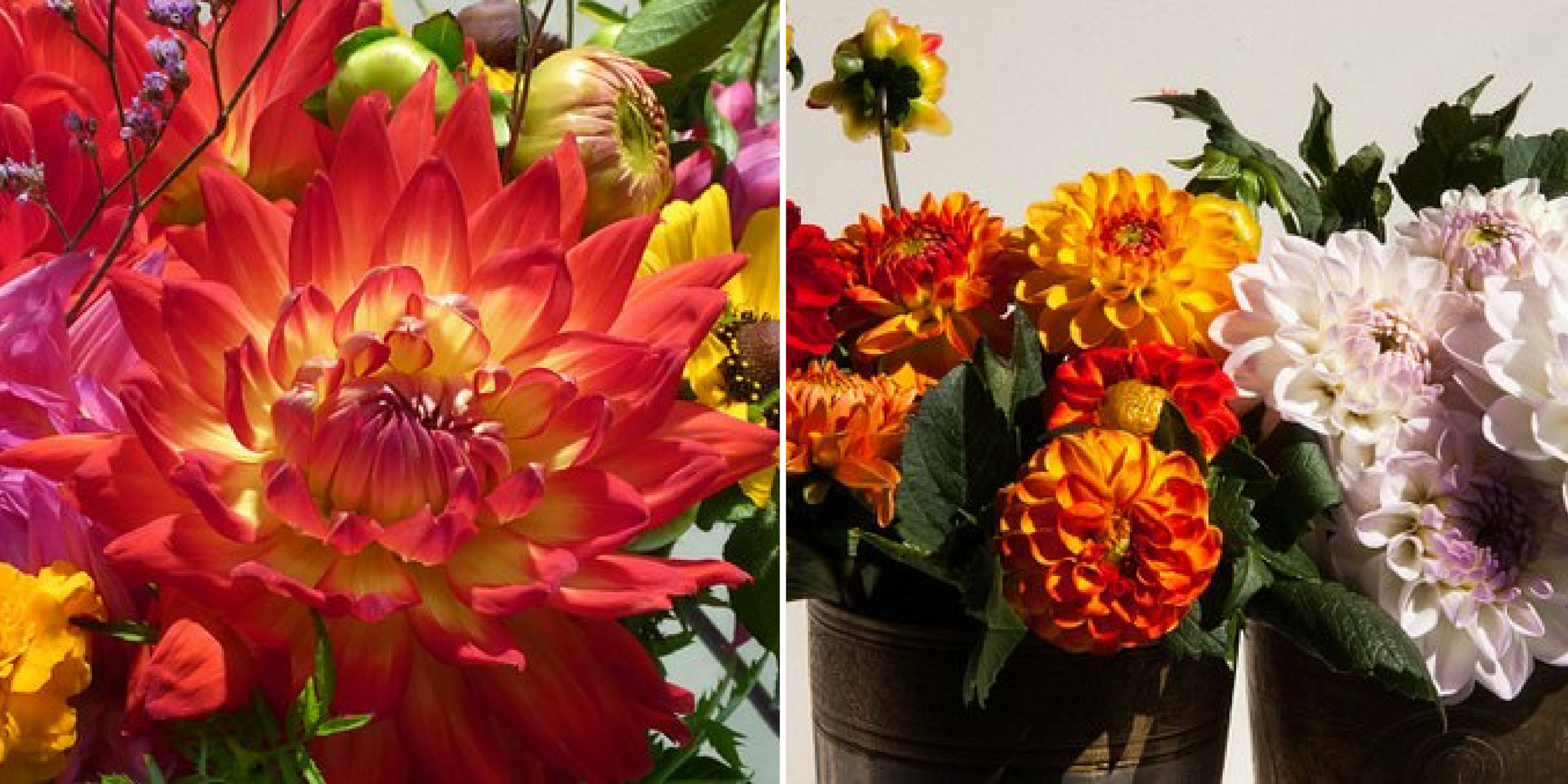
- Subscribe!
- Contents































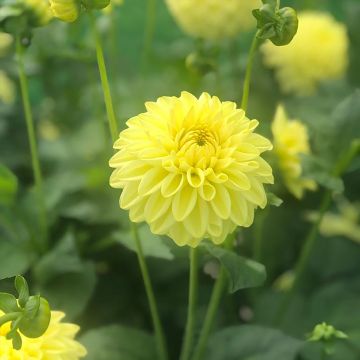

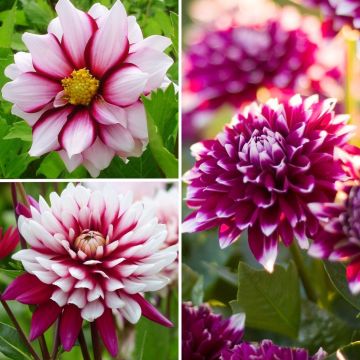
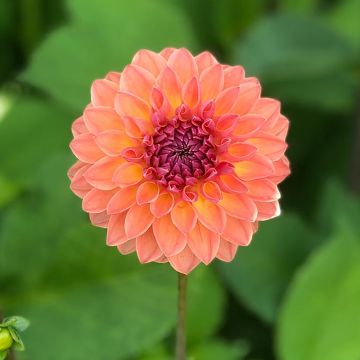
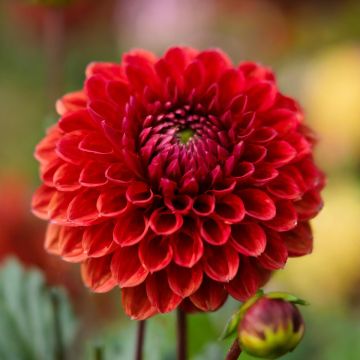
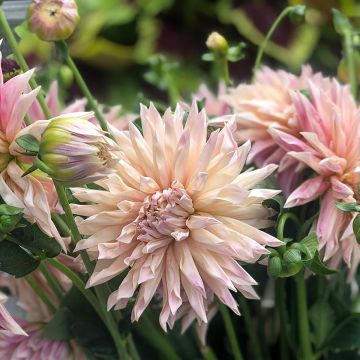

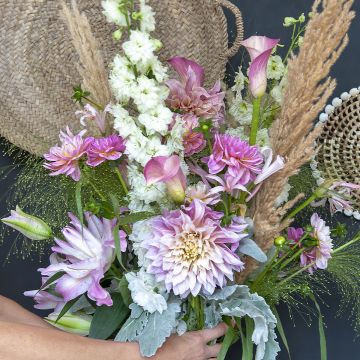
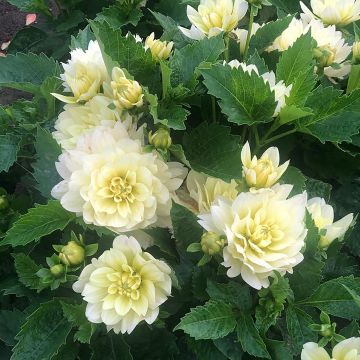
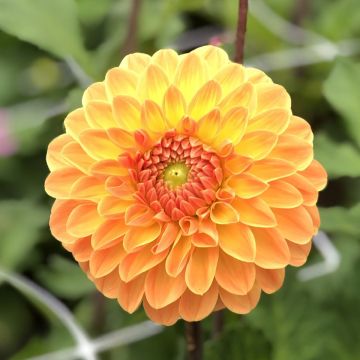
Comments